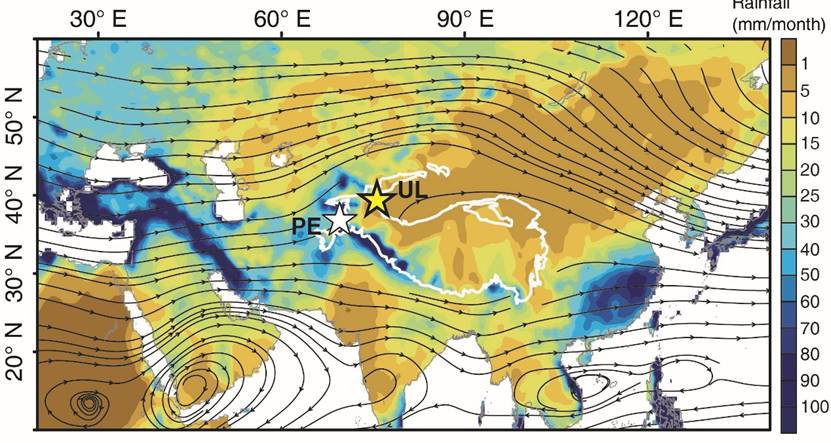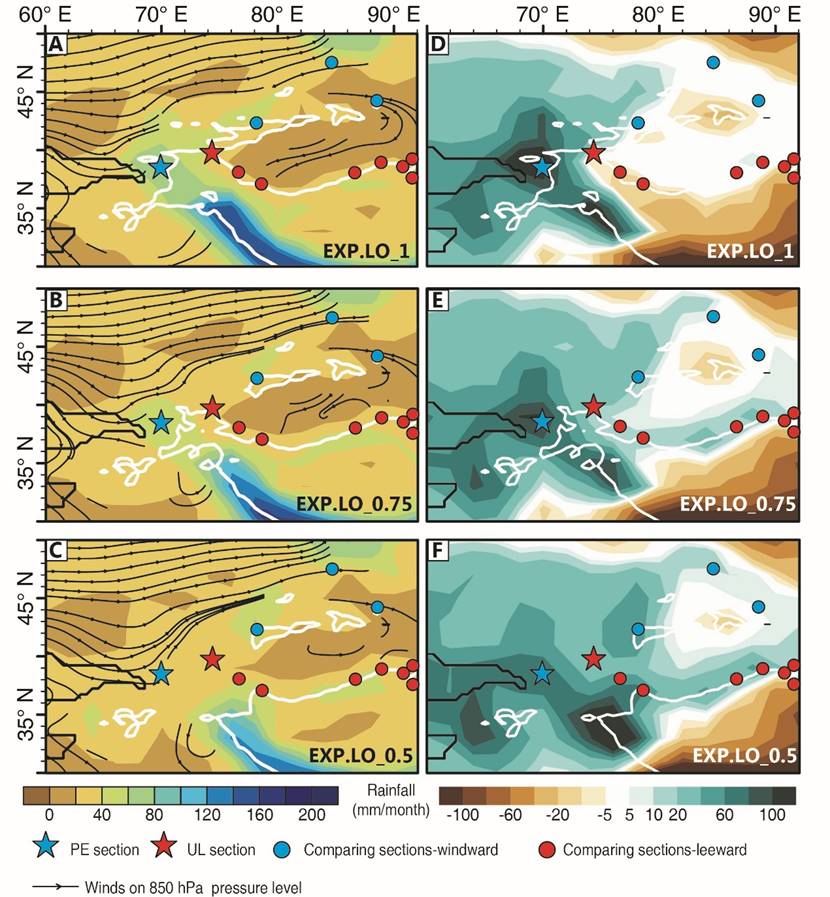central asia constitutes the largest extra-tropical arid zone on earth, and is one of the main dust sources of the northern hemisphere. when and how this inland arid environment established in central asia during the cenozoic is a topic of ongoing debate. most popular models suggest that the rise of tibet plateau, the retreat of the parathetys, and global cooling as main drivers. recent work suggests thatthe interactions between the westerlies and the pamir-tian shan played an important role in controlling hydroclimate changes over central asia today.however, the timing when this topographic-atmospheric framework was established remains poorly constrained.
a new study published in geology on april 29, 2020 reports stable isotope records from cenozoic sedimentary sequences from the tajik and tarim basins, which are located in the windward (western) and leeward (eastern) sides of the pamir-tian shan orogen, respectively. the authors found that distinct west-east hydroclimate differences, characterized by wetter climate changes & negative shift in stable oxygen isotope records on the windward side (i.e. the tajik basin) and enhanced aridification (i.e. the tarim basin) & positive shift in stable oxygen isotope records on the windward side (i.e. the tajik basin) of the pamir-tian shan orogen, were established over central asia during the late oligocene (ca. ~25 ma). integrating with new climate simulations (agcm, echam5) and published tectonic evidence, the authors suggest that a significant portion of the pamir-tian shan orogen had reached elevations of ~3 km and acted as a moisture barrier for the westerlies since ~25 ma. this provides compelling geological and climate modelling evidence that the interactions between the westerlies and pamir-tian shan orogen played an important role in driving arid environments changes in central asia since the late oligocene (ca. ~25 ma). this dataset sets up some very interesting questions for future work, and is also important for understanding the interactions between the westerlies and asian monsoon, as well as its paleoenvironmental impact.
associate professor xin wang from lanzhou university is the first author, xin wang and professor fahu chen are the corresponding authors. lanzhou university and institute of tibetan plateau research are the corresponding institutions. this study issupported by the national natural science foundation of china (grant 41672158), the second tibetan plateau scientific expedition and research program (grant 2019qzkk0602), national science foundation (grant ear-1450917), and helmholtz postdoc program (grant pd-301).
the asian dust and aridification research group in lanzhou university, leading by professor fahu chen and professor donghuai sun, focus their study on the history of asian aridification and its forcing mechanisms. this group have performed desert drilling project in the tengger desert, badain jaran desert, ulan buh desert, and gurbantünggüt desert. they also carried out paleoclimate study of loess-paleosol sequences in northwestern china (i.e. xinjiang), tajikistan, and iran. their research shed light on the timing of deserts formation in china, paleoclimate changes in arid central asia and its relationship with monsoon asian, as well as tectonic-paleogeography-climate history of central asia during the early cenozoic era.
paper linkage:

fig. 1 map showing distinct west-east hydroclimate difference in central asia.
fig. 2 paleoclimate and stable oxygen isotope records revealed a distinct west-east hydroclimate differences were established over central asia during the late oligocene.

fig. 3 climate modeling simulations showing the hydroclimate differences (both mean annual precipitation and precipitation seasonality) are present, when relief of the pamir-tian shan convergence zone is higher than 75% of modern elevation (~3000 m).